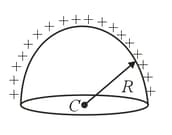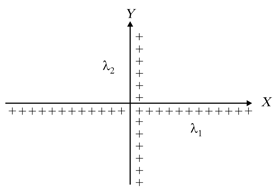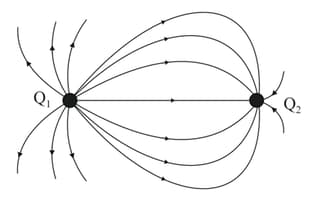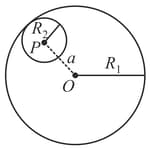A hemisphere of radius as shown in figure is uniformly charged with a surface charge density The electric field at the centre is



Important Questions on Electric Charges and Fields
Two non-conducting infinitely long straight wires with uniform linear charge densities and are arranged along and -axis respectively. Their point of intersection is at origin. One of the field lines due to these wires in plane is a straight line passing through the origin. The angle made by this line with -axis is

Two charged metallic spheres of same size repel each other by a force . They are now touched with each other and are then separated to same initial distance. Now the force of repulsion is . Which of following are possible ?
In which of the following figures, electric field at point is non-zero?
A few electric field lines for a system of two charges and fixed at two different points on the -axis are shown in the figure. These lines suggest that

Two nonconducting solid spheres of radii and having uniform volume charge densities and , respectively, touch each other. The net electric field at a distance from the centre of the smaller sphere, along the line joining the centre of the spheres, is zero. The ratio can be:
Consider a uniform spherical charge distribution of radius centred at the origin . In this distribution, a spherical cavity of radius , centred at with distance (see figure) is made. If the electric field inside the cavity at position is , then the correct statement(s) is(are)

